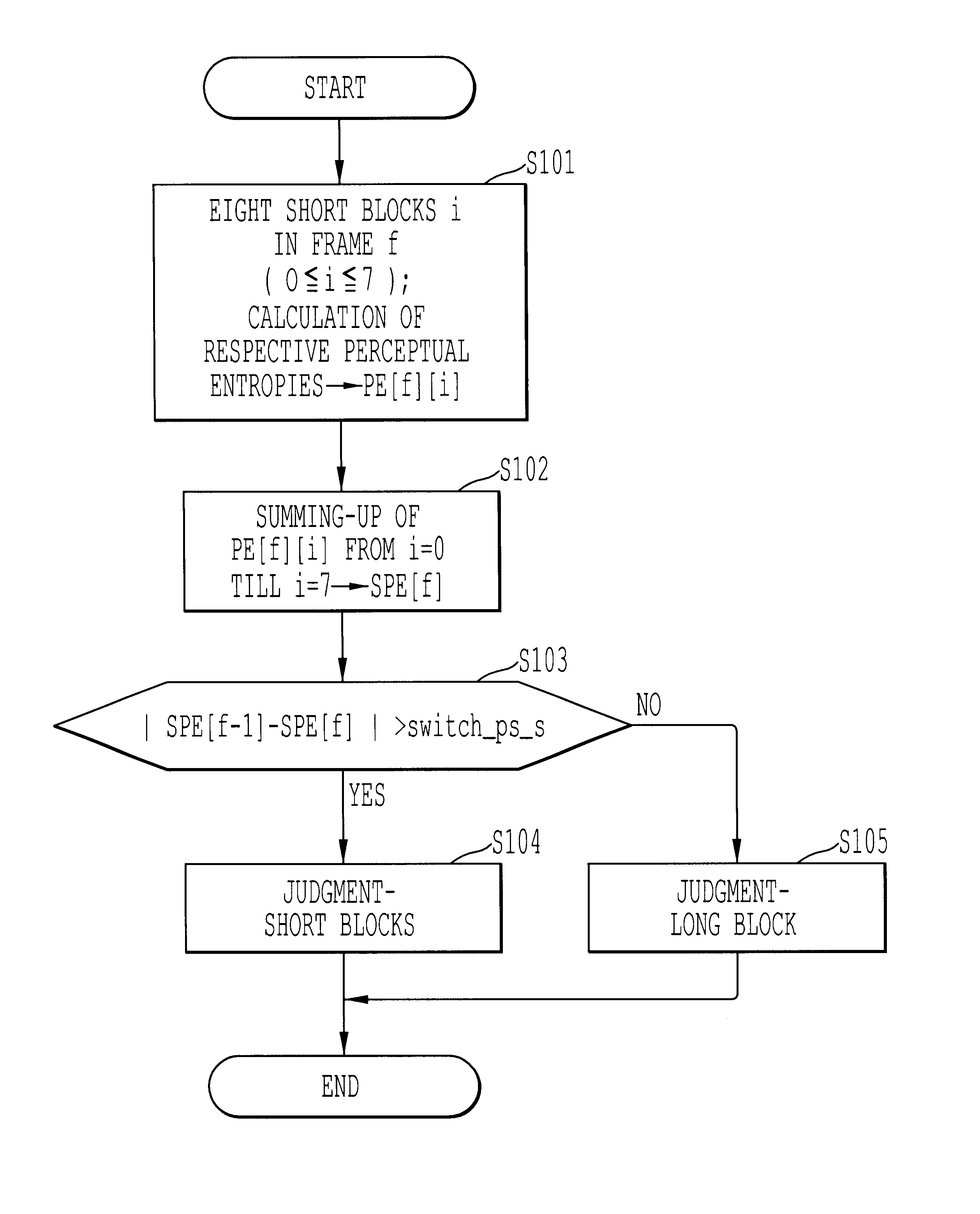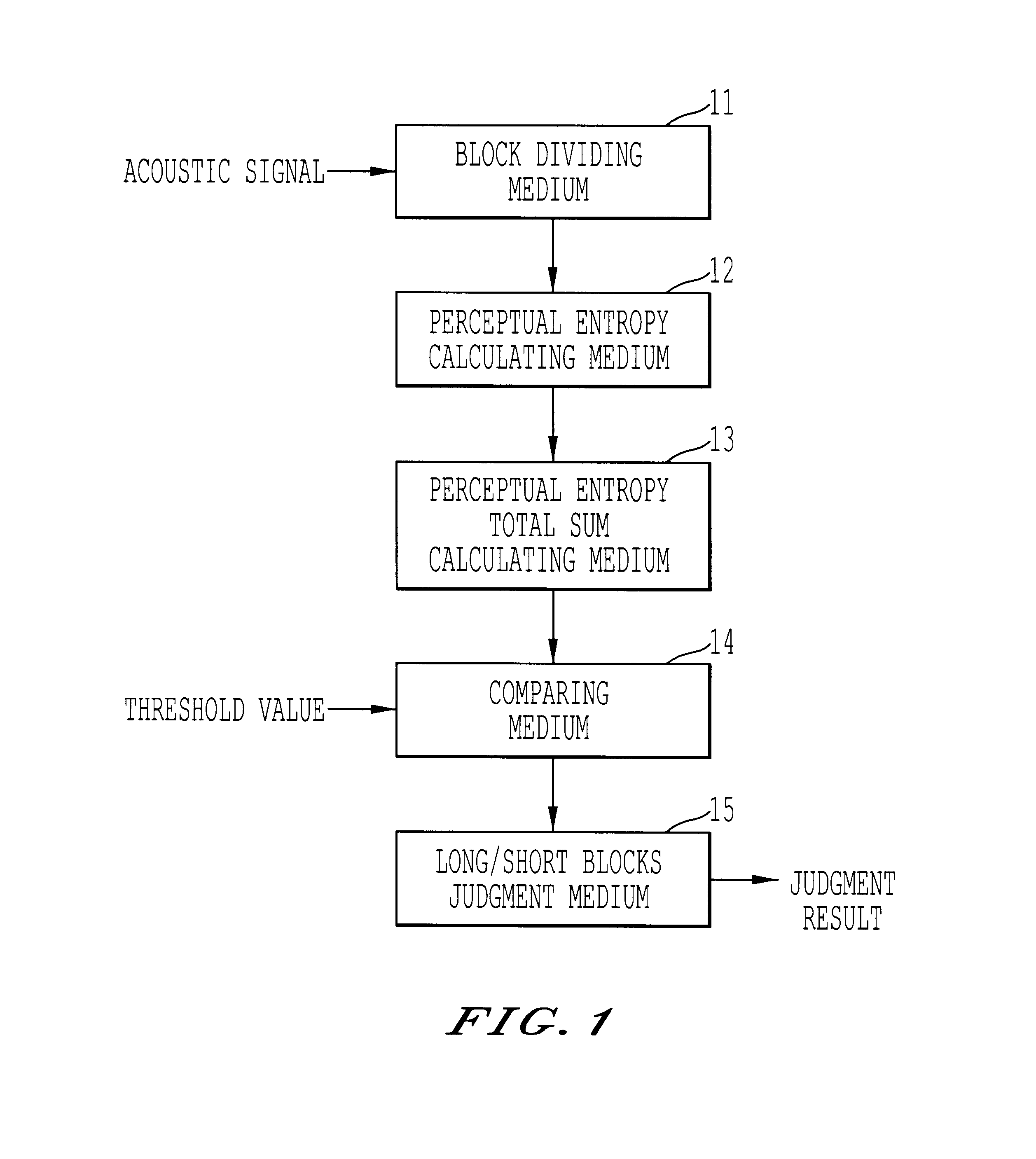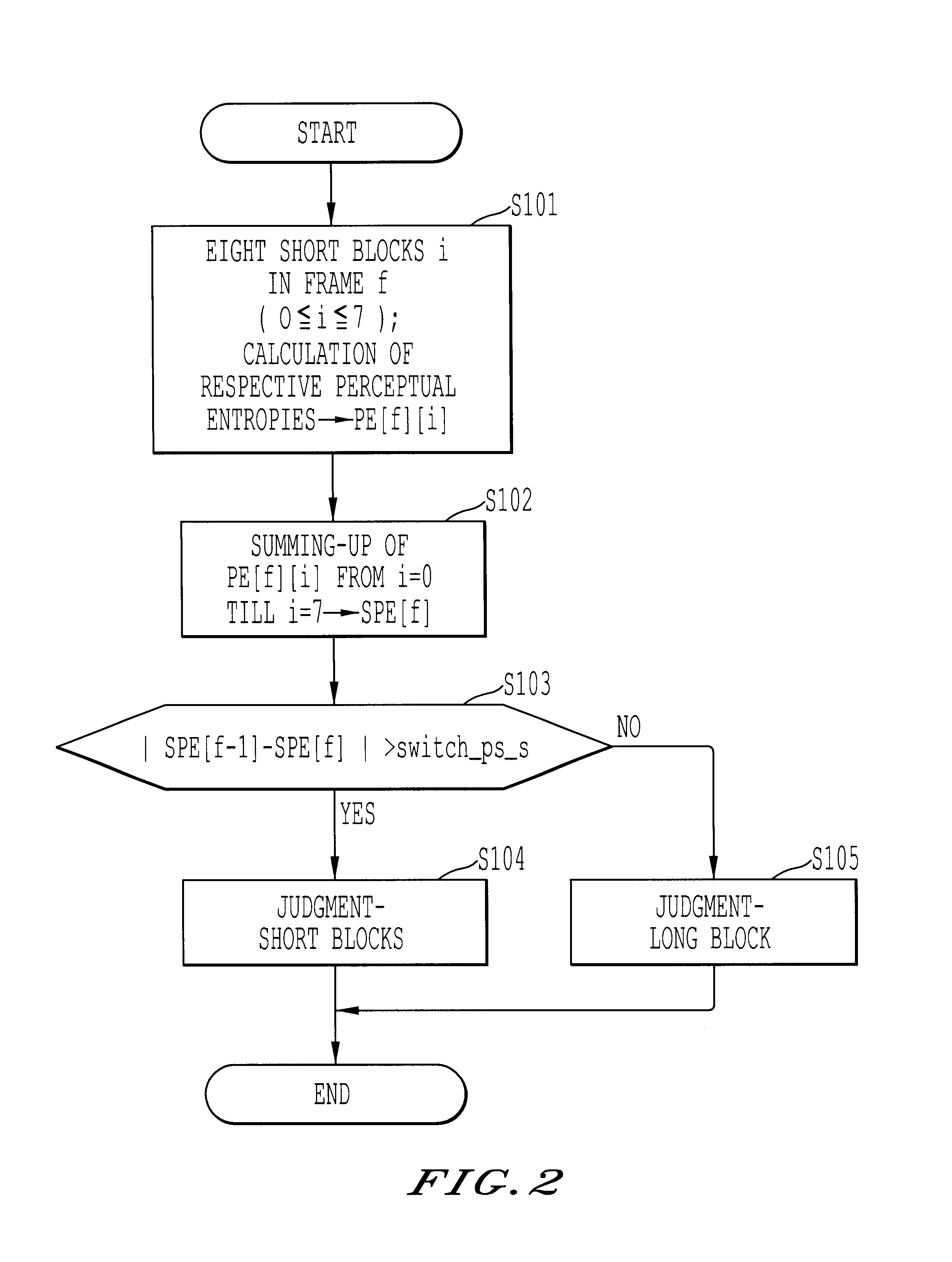Method, apparatus, and medium of digital acoustic signal coding long/short blocks judgement by frame difference of perceptual entropy
rame difference technology, applied in the field of digital acoustic signal coding apparatus, a method of coding a digital acoustic signal, and a recording medium, can solve the problems of 77% as to the upper limit, distortion of the signal generally, and limitation of the compression factor
- Summary
- Abstract
- Description
- Claims
- Application Information
AI Technical Summary
Problems solved by technology
Method used
Image
Examples
first embodiment
The first embodiment of the present invention is described hereinafter, referring to the accompanying drawings.
FIG. 1 is a block diagram illustrating the structure of a digital acoustic signal coding apparatus relating to the first embodiment of the invention. The digital acoustic signal coding apparatus of the embodiment as shown in FIG. 1 is constructed with a block dividing medium 11 for dividing the inputted acoustic signal into the predetermined number of blocks, e.g., eight successive blocks in the following explanation; a perceptual entropy calculating medium 12 for calculating the perceptual entropy PE of the respective divided blocks in accordance with the above-mentioned calculation formula; a perceptual entropy total sum calculating medium 13 for obtaining the total sum in the frame of the calculated perceptual entropy; a comparison medium 14 or comparing the absolute value of the difference between the respective total sums, in the frame, of the perceptual entropy of the...
second embodiment
Next, the operation of the digital acoustic signal coding apparatus relating to the second embodiment according to the present invention is explained in accordance with the flow chart shown in FIG. 5. The processes associated with S101-S104 shown in FIG. 2 are the same in the respectively performed with respect to steps S201-S204 shown in FIG. 5. Only different operations are described here, and, thus, the description of these same operations is omitted here.
In step S203, the absolute value of the difference between the value SPE[f-1] which is already obtained at the previous frame f-1 in the same way as mentioned above and the value SPE[f] and the absolute value thus obtained is compared with the predetermined threshold value switch_pe_s. When the obtained absolute value is larger than switch_pe_s, the step advances to step S204 and the frame f is judged to be suitable for conversion with plural short blocks. On the other hand, when the obtained absolute value is smaller than switc...
third embodiment
Furthermore, although one of switch_pe_s is determined in FIG. 2 and FIG. 5, it is also allowable to previously determine the value per each of the sampling frequencies of the input acoustic signal as in the case of FIG. 7 showing the example of the value of switch_pe_s per each of the sampling frequencies, and set the value of switch_pe_s, referring to FIG. 7, in accordance with the sampling frequency of the acoustic signal inputted practically.
Next, the system structure of the present invention is illustrated in the block diagram of FIG. 8. Namely, FIG. 8 shows hardware constructed with a microprocessor controlled by software using digital acoustic signal coding methods of the above-mentioned embodiments. In FIG. 8, the digital acoustic signal coding system is constructed with an interface (hereinafter, abbreviated as I / F) 81, a CPU 82, a ROM 83, a RAM 84, A displaying apparatus 85, a hard disc 86, a keyboard 87, and a CD-ROM drive 88.
Furthermore, the commonly-used processing appa...
PUM
 Login to View More
Login to View More Abstract
Description
Claims
Application Information
 Login to View More
Login to View More - R&D
- Intellectual Property
- Life Sciences
- Materials
- Tech Scout
- Unparalleled Data Quality
- Higher Quality Content
- 60% Fewer Hallucinations
Browse by: Latest US Patents, China's latest patents, Technical Efficacy Thesaurus, Application Domain, Technology Topic, Popular Technical Reports.
© 2025 PatSnap. All rights reserved.Legal|Privacy policy|Modern Slavery Act Transparency Statement|Sitemap|About US| Contact US: help@patsnap.com



